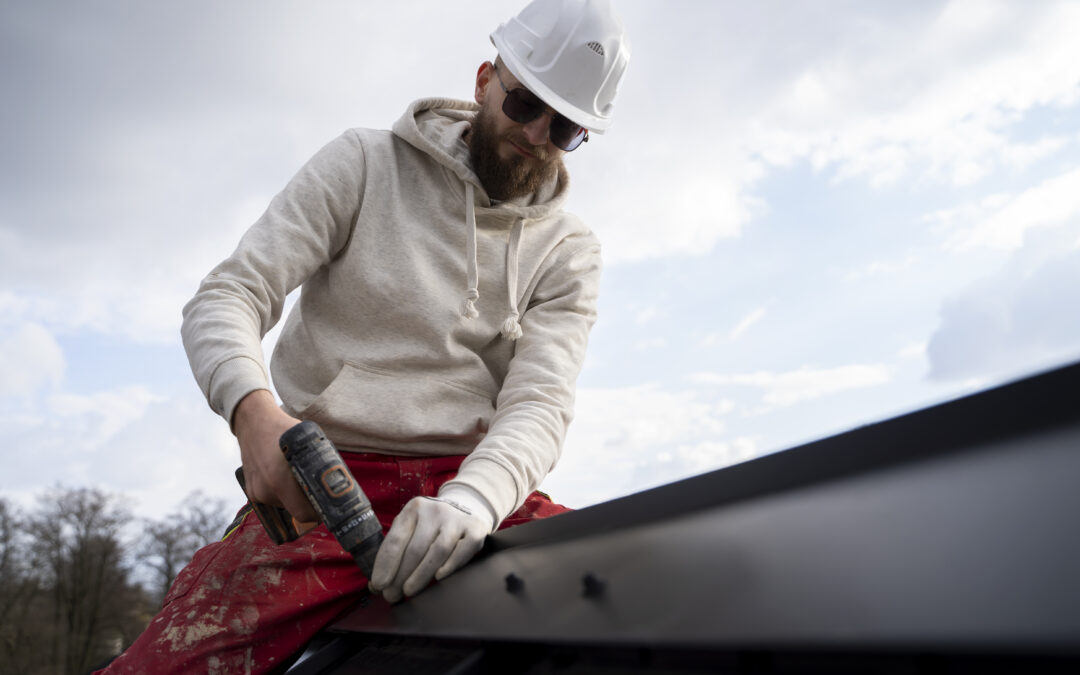Common Roofing Issues in Arizona and How to Prevent Them
Arizona’s unique desert climate poses several challenges for homeowners, particularly when it comes to roofing. The state’s intense heat, monsoon storms, and dust storms can all take a toll on roofs over time. Being aware of the most common roofing issues in Arizona and taking steps to prevent them can save homeowners from costly repairs and prolong the lifespan of their roofs. Here’s a detailed look at common roofing problems in Arizona and how to prevent them.
-
Sun and Heat Damage
Arizona’s harsh sun is one of the biggest threats to roofing materials. The extreme heat, especially during summer, can cause roofing materials to dry out, crack, or warp. UV rays can also degrade the protective layer on asphalt shingles, leading to premature aging.
Prevention Tips:
– Use heat-resistant materials: Consider installing roofing materials that are specifically designed to withstand high temperatures, such as clay tiles, metal roofing, or specialized asphalt shingles with reflective coatings.
– Apply a reflective roof coating: A reflective roof coating can help reduce heat absorption, keep your roof cooler, and extend its lifespan.
– Schedule regular inspections: Regularly inspect your roof for signs of cracking, warping, or discoloration, particularly during and after the hottest months. Prompt repairs can prevent further damage.
-
Damage from Monsoon Storms
Arizona’s monsoon season brings heavy rain, strong winds, and hail, all of which can wreak havoc on roofs. The sudden downpours can lead to roof leaks, while strong winds may loosen or tear off shingles. Hail can dent or crack roofing materials, leading to long-term structural issues.
Prevention Tips:
– Install storm-resistant roofing materials: Metal roofing and impact-resistant shingles can better withstand the damage caused by hail and high winds.
– Ensure proper drainage: Clean your gutters and downspouts regularly to ensure they can handle the heavy rainfall associated with monsoons. Blocked gutters can lead to water pooling on your roof, causing leaks and structural damage.
– Trim nearby trees: High winds can cause tree branches to break and damage your roof. Regularly trimming trees near your house can reduce the risk of storm damage.

-
Dust Storm Erosion
Arizona is known for its massive dust storms, or “haboobs,” which can carry sand and debris at high speeds. These dust storms can sandblast roofing materials, strip protective layers off shingles, and leave behind debris that clogs gutters and causes water damage.
Prevention Tips:
– Use durable roofing materials: Metal and clay tile roofs tend to withstand dust storms better than asphalt shingles, which can lose granules due to wind-blown sand.
– Check for granule loss: After a dust storm, inspect your roof and gutters for excessive granule buildup, which could indicate that your shingles are wearing down. Replace damaged shingles as needed.
– Clear debris: Make it a habit to clear debris from your roof and gutters after a storm to prevent water buildup and further damage.
-
Cracked or Dislodged Tiles
Many Arizona homes use clay or concrete tiles due to their heat resistance and aesthetic appeal. However, these tiles can crack or become dislodged over time, particularly after exposure to extreme temperatures, high winds, or impacts from debris. Cracked or missing tiles can expose the underlying roof structure to water damage.
Prevention Tips:
– Conduct routine inspections: Regularly check for cracked or missing tiles, especially after storms. Replacing damaged tiles promptly can prevent further water damage and structural issues.
– Avoid walking on your roof: Tile roofs are more susceptible to damage from foot traffic. If you need to inspect your roof, consider hiring a professional to avoid accidentally cracking tiles.
– Seal tile edges: Ensure the edges of your roof tiles are properly sealed to prevent wind from lifting or dislodging them.

-
Roof Leaks
Roof leaks are a common issue in Arizona, especially during monsoon season. Leaks can occur due to broken shingles, damaged flashing around chimneys or vents, or cracked tiles. If left untreated, leaks can lead to mold, wood rot, and structural damage inside the home.
Prevention Tips:
– Inspect flashing: Flashing, the material used to seal roof joints, can wear down over time and lead to leaks. Regularly inspect flashing around chimneys, vents, and skylights, and replace any damaged sections.
– Check your attic: Periodically check your attic for any signs of moisture, water stains, or mold, which can indicate a roof leak. Addressing leaks early can prevent more extensive damage.
– Seal roof penetrations: Any penetration through the roof, like for vents or pipes, should be properly sealed. If seals deteriorate, they should be repaired or replaced.
-
Ventilation Issues
Proper roof ventilation is crucial for maintaining the overall health of your roof, particularly in a hot climate like Arizona’s. Poor ventilation can cause excessive heat buildup in the attic, leading to increased energy costs and damage to roofing materials. Insufficient ventilation can also trap moisture, leading to mold and wood rot.
Prevention Tips:
– Ensure adequate ventilation: Make sure your attic has sufficient ventilation to allow hot air to escape. Installing ridge vents or soffit vents can help regulate temperatures and prolong the life of your roof.
– Insulate your attic: Proper insulation works hand-in-hand with ventilation by keeping your home cool and preventing heat from building up under the roof.
– Schedule a professional inspection: Have a roofing professional evaluate your ventilation system to ensure it is functioning efficiently.

-
Thermal Shock and Expansion
In Arizona, daytime temperatures can soar, while nighttime temperatures drop significantly. This rapid fluctuation causes roofing materials to expand and contract, which can lead to thermal shock. Over time, this constant movement can weaken materials, causing cracks and splits.
Prevention Tips:
– Use flexible roofing materials: Some roofing materials, such as rubberized asphalt or synthetic shingles, are better equipped to handle the expansion and contraction caused by temperature fluctuations.
– Apply roof coatings: Elastomeric roof coatings can provide a flexible, protective layer that helps absorb the stress from thermal expansion.
– Regular inspections: Keep an eye on your roof for signs of cracking or splitting, especially during seasonal transitions when temperature fluctuations are more extreme.
Arizona’s desert climate presents a unique set of challenges for homeowners, from extreme heat and sun damage to powerful monsoon storms and dust storms. By understanding the common roofing issues that arise in this environment and taking preventative measures—such as choosing durable materials, maintaining proper ventilation, and performing regular inspections—you can extend the life of your roof and protect your home from the elements.


Recent Comments